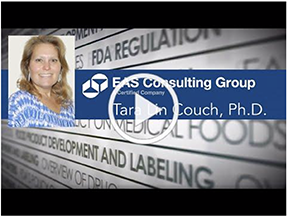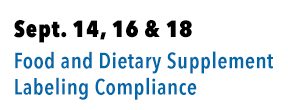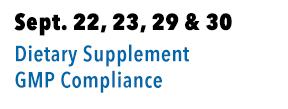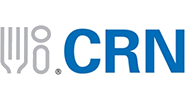OCTOBER 30, 2020
Managing Overages in Vitamins, Minerals & Dietary Supplements
Stephen R. Cammarn, Ph.D.
 Managing the overages of the dietary ingredient(s) in vitamins, minerals and dietary supplements can be among the most technically challenging Good Manufacturing Practices (GMP) problems that vitamin, mineral and supplement formulators and manufacturers must address. Moreover, as failure to adequately manage overages can lead to excessive production costs, stability concerns, and even regulatory and safety risks, it is in the interest of the manufacturer and the consumer that the formulator invest the time and effort to do this wisely. In some cases, hiring a technically proficient consultant well versed in dietary supplement GMPs is the most efficient method of doing so. The manufacture of supplements requires close attention to a myriad of formulaic challenges and assessment of all in tandem is critical to success in this area.
Managing the overages of the dietary ingredient(s) in vitamins, minerals and dietary supplements can be among the most technically challenging Good Manufacturing Practices (GMP) problems that vitamin, mineral and supplement formulators and manufacturers must address. Moreover, as failure to adequately manage overages can lead to excessive production costs, stability concerns, and even regulatory and safety risks, it is in the interest of the manufacturer and the consumer that the formulator invest the time and effort to do this wisely. In some cases, hiring a technically proficient consultant well versed in dietary supplement GMPs is the most efficient method of doing so. The manufacture of supplements requires close attention to a myriad of formulaic challenges and assessment of all in tandem is critical to success in this area.

Overages are necessitated by the legal basis for dietary supplements as a subset of food. US law specifies that, “… a dietary supplement shall be deemed to be a food…” (21 CFR 321 (ff)) and, “…A food with a vitamin, mineral…shall be deemed to be misbranded… unless … the nutrient content of the composite is at least equal to that value for that nutrient declared on the label” (21 CFR 101.9 (g)(4)). Therefore, it is inevitable that manufacturers of dietary supplements design their dietary supplements with an excess of dietary ingredients, such that the supplements meet the nutrient content of their label over their entire shelf life. This can be daunting, particularly with notoriously unstable dietary ingredients, such as selected vitamins and herbal ingredients.
 The requirement for meeting dietary supplement label requirements is decidedly different for drugs. In the U.S., drug products are not expected to include overages, and are generally required to be within 90–110% of their labeled assay over their shelf life. (The requirement in the EU is narrower, 95–105%.) Some in the dietary supplement industry have suggested, “Wouldn’t it be easier to adopt the tolerances permitted in drugs?”
The requirement for meeting dietary supplement label requirements is decidedly different for drugs. In the U.S., drug products are not expected to include overages, and are generally required to be within 90–110% of their labeled assay over their shelf life. (The requirement in the EU is narrower, 95–105%.) Some in the dietary supplement industry have suggested, “Wouldn’t it be easier to adopt the tolerances permitted in drugs?”
- Be careful what you wish for! Achieving 90–110% of label content with unstable vitamins (such as Vitamin D) can be very challenging, and may drastically reduce your supplement’s shelf-life; and
- This would take an act of Congress–literally. In the Drug Supplement Health and Education Act (DSHEA) of 1994, Congress stipulated that dietary supplement regulations, “…shall be modeled after current good manufacturing practice regulations for food…” (21 CFR 342 (g) (2). Therefore, adopting the cGMP standards would require that Congress rewrite and legislate several aspects of the US Code.
So, we must move forward with the expectations of meeting supplement label requirements through the application of overages in our formulations. But how does one determine what overage is required?
The amount of overage is dictated by two sources of loss: (1) the expected loss of the dietary ingredient, due to instability, over the shelf-life of the dietary product; and (2) sample-to-sample error in reported strength due to inevitable variability in manufacturing and analytical methodologies. For vitamins and herbal ingredients, overages are often driven by losses of the dietary ingredient over the shelf life. Overages due to sample-to-sample error are more often found in ingredients of smaller quantities—such as minerals—and is typically driven by analytical method variance, blending uniformity, and variances in dietary supplement weight and dietary ingredient purity.
Mathematically, the amount of overage can be defined as:
Overage, % = ΔX + CI * (σM2 + σWt2 + σB2 + σP2) ½
Where,
ΔX = the average loss on stability over the shelf life, %
CI = your confidence interval coefficient (i.e., 2 for 95% confidence)
σM2 = the variance of your assay method for that dietary ingredient, %
σWt2 = the variance in dietary ingredient weight, %
σB2 = the variance in blend uniformity, %
σP2 = the variance in dietary ingredient purity, %
For example, if you desire 95% confidence of meeting your label claims over shelf life, and you lose an average of 10% of assay over shelf life, with 2% variances in your method and 1% in your processing testing (which is quite good), your suggested overage would be:
Overage, % = 10% + 2 * (22 + 12 + 12 + 12) ½ = 15%
For dietary supplement products with multiple dietary ingredients, this determination should be performed for each and dietary ingredient, as the stability, method variability, and dietary ingredient purity can be quite different.
When considering both the stability losses and the sources of variation, the required amounts of supplement overages can quickly escalate. This not only drives up manufacturing costs (and costs to the consumer), but can become logistically difficult (e.g., overly large tablets and capsules). In some cases, one can even encroach upon recommended upper tolerances for vitamin intakes. (For these, see Dietary Reference Intakes: A Risk Assessment for Model for Establishing Upper Intake Levels for Nutrients, Food & Nutrition Board, Institute of Medicine, National Academy of Sciences. Outside of the US, there are different recommendations for supplement products.)
Note that there are specific regulatory expectations regarding supplement overages. It is a regulatory expectation that overages be reasonable. Further, as the rationale for any specification is required, failure to document and justify your overages can also lead to regulatory risks.
Rather than adopting overages that are costly, encroach upon safety tolerances and may be perceived as “unreasonable”, there are alternatives. A better way, perhaps, is to invest in manufacturing improvements that minimize the need for supplement overages, by minimizing stability losses and process variances. The approach required is dependent upon the exact nature of stability loss and manufacturing variances, but includes such tools as:
Stability Losses:
- Proper selection of the dietary ingredient, i.e., uses of appropriate counterions;
- Selection of the proper dietary product form to enhance stability. For example, dry tablets and capsules having lower water activity and can enhance stability over other forms;
- Separation of incompatible ingredients through coated granules and/or bilayer forms;
- Headspace control of oxygen and moisture;
- Barrier packaging to prevent moisture, oxygen or light transmission from harming supplement product (which is a must if you wish to control headspace);
- Scavengers and desiccants.
Manufacturing Variances:
- Careful selection of the dietary ingredient form and manufacturing process to reduce supplement product variability. For example, liquid processing is often far more uniform than dry processes. Even so, careful selection of blender types, particle sizes and ordered blending can minimize dry blend variability.
- Specification and control of dietary ingredient purity and moisture content;
- Application of published methods for dietary ingredient assay, such as those found in AOAC or USP.
As can be seen, there are a wealth of GMP tools available to the dietary supplement formulator and manufacturer to minimize losses on stability and variability in manufacturing of dietary supplements, thereby reducing the need for costly overages in expensive dietary ingredients. The investment in these tools during product development can result in significant benefits in reduced manufacturing cost, improved quality and reduced regulatory risk and scrutiny. Ensure those with oversight of your GMP programs are well versed in determining and monitoring dietary supplement overages. A competent technical expert with excellent analytical capabilities can ensure the stability of manufacturing processes, the safety of your product and compliance with all subparts of the dietary supplement GMP regulations per FDA 21 CFR 111.
Stephen Cammarn, Ph.D., is an independent consultant with EAS Consulting Group. Dr. Cammarn has 33+ years of industry experience leading and managing organizations to develop, launch and ensure the quality of new products in the pharmaceutical, OTC and VMS industries. Dr. Cammarn can be reached through EAS Consulting Group (www.easconsultinggroup.com, (571)-447-5500).


